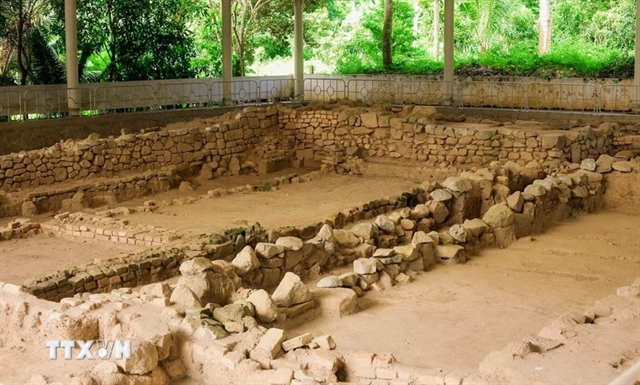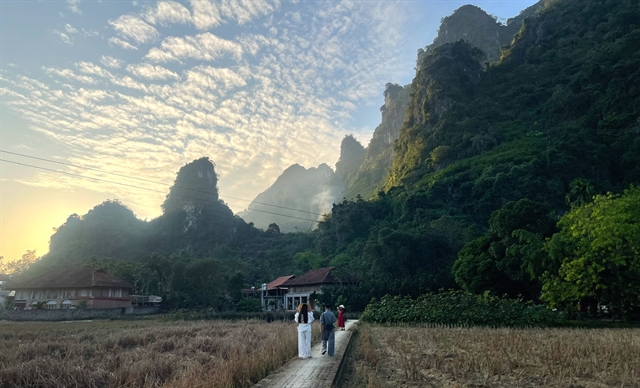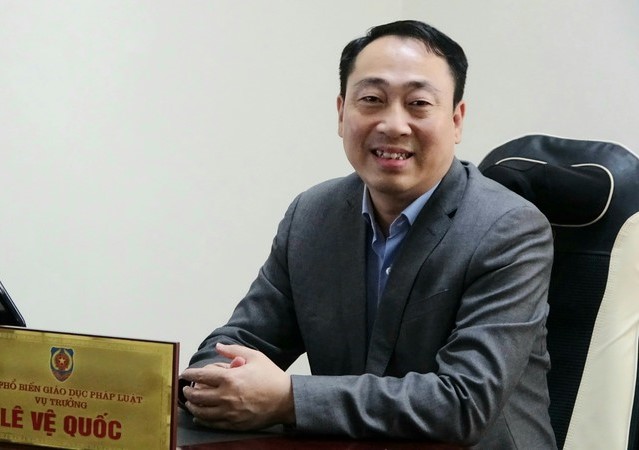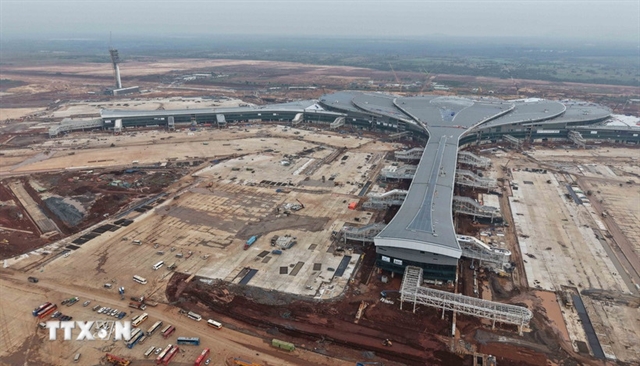 Society
Society

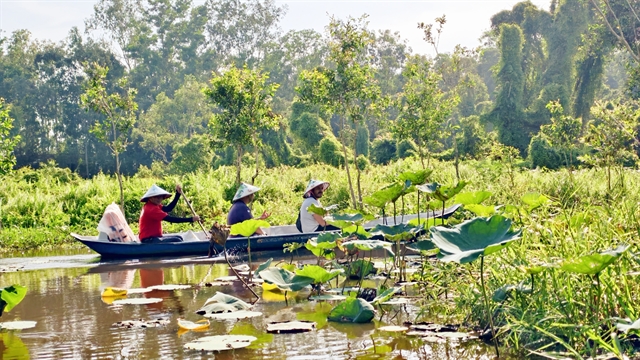
|
| Foreign tourists at the Trà Sư cajuput forest in Tịnh Biên Town, An Giang Province. — VNA/VNS Photo |
AN GIANG — The southern province of An Giang is striving for an economic breakthrough in the second half of 2025, hoping to achieve at least 8 per cent economic growth and aiming for a more ambitious double-digit figure, according to its People's Committee.
On July 1, Kiên Giang Province was merged with An Giang, and at the end of the first half of 2025 their economy had been worth a combined VNĐ161.3 trillion (US$6.2 billion).
The expanded province has since developed two detailed growth scenarios, one aiming for 8.5 per cent growth in 2025 and another for 10 per cent.
The province identifies key areas to drive performance, with agriculture, tourism, industry, and public spending playing pivotal roles.
It continues to prioritise agriculture for its sustainable development.
It is effectively implementing its 2021–2025 agricultural restructuring plan with a strong focus on the national programme titled “Sustainable Development of One Million Hectares of High-Quality, Low-Emission Specialised Rice Cultivation Linked to Green Growth in the Mekong Delta by 2030.”
According to the Department of Agriculture and Environment, rice remains the main agricultural product, with efforts concentrated on developing high-quality growing zones.
An Giang also promotes high-tech aquaculture, focusing on including pangasius and shrimp farming besides cage fish farming in coastal and riverine areas.
In horticulture, the province is expanding specialised cultivation zones for vegetables and fruits, enhancing product marketing, and steering production towards eco-friendly practices.
Livestock development is also receiving attention through sustainable farming models.
An Giang aims to achieve output of over VNĐ27.416 trillion (US$1.07 billion) in agriculture, forestry and fisheries in the second half of 2025, and over VNĐ52.591 trillion (US$2.06 billion) for the full year.
It targets rice output of more than 3.74 million tonnes and 8.73 million tonnes for the two periods, aquaculture output of 554,246 tonnes and 1.12 million tonnes, and seafood yield of 213,432 tonnes and 422,300 tonnes.
The summer-autumn and autumn-winter rice crops are being restructured to increase efficiency and value.
Farmers are being encouraged to switch from traditional rice varieties to high-quality strains, and to grow more profitable crops such as fruit trees and vegetables on low-yield rice fields or switch to aquaculture where feasible.
Support is also being provided for developing pangasius and shrimp farming zones and accelerating marine farming projects.
Regulatory management is being reinforced to ensure quality control in production inputs and outputs, while efforts to connect producers with markets aim to raise the competitiveness of agricultural products.
Tourism poised for sharp rebound
Tourism is projected to see rapid growth in the second half of the year, helping balance out slower growth in other sectors.
A surge in domestic and international visitor numbers is expected during the year-end months, with major destinations including Phú Quốc, Nam Du, Hòn Sơn, Hà Tiên, Rạch Giá, Núi Sam, and Núi Cấm.
An Giang aims to attract 8.7 million visitors in the second half of 2025, including 720,000 international tourists, and 22.7 million and 1.62 million for the full year.
Tourism revenues are projected at VNĐ26.886 trillion (around $1.05 billion) and VNĐ62.8 trillion ($2.46 billion).
Bùi Quốc Thái, director of the Department of Tourism, said the province continues to promote sustainable tourism, enhance promotion of local destinations and culture and establish An Giang as one of the Mekong Delta’s most attractive locations.
It is implementing stimulus programmes, strengthening inter-provincial and international tourism partnerships and developing tourism brands and signature products.

|
| Farmers harvest the 2025 winter-spring rice crop in Châu Phú District, An Giang Province. VNA/VNS Photo |
Industry, exports, investment acceleration
Industry and construction are also expected to witness strong growth.
Key infrastructure projects serving the APEC 2027 Summit are being speeded up. Several housing projects are expected to be revived following the resolution of legal issues.
Residential construction is generally anticipated to boom, and manufacturing enterprises are ramping up production to meet year-end export demand and prepare for the Tết (Lunar New Year) holidays.
The province targets exports of $2.43 billion for 2025 after achieving $1.1 billion in the first half.
Output of key products such as leather shoes, canned fish, processed seafood, cement, rice, and solar power have shown strong growth compared to a year earlier.
An Giang is striving to fully disburse its 2025 public spending outlay of over VNĐ26.116 trillion ($1.02 billion), including VNĐ10.873 trillion ($427 million) from the central budget and VNĐ15.243 trillion ($599 million) from its own resources.
Authorities are intensifying inspections and speeding up construction progress, especially of major projects related to economic recovery, three national target programmes and the APEC 2027 Summit in Phú Quốc.
An Giang is also working to meet targets under the “One Million Social Housing Units” project in line with its 2021–25 housing plan.
Provincial leaders have emphasised the importance of improving the business environment and enhancing national competitiveness rankings in 2025.
The province aims to foster entrepreneurship and innovation by supporting enterprises and start-ups.
It is actively identifying viable projects aligned with its strengths to attract investment, especially in housing, real estate and urban development.
All government agencies and localities have been directed to develop clear action plans, with responsibilities and deadlines spelled out, under the motto “clear people, clear tasks, clear timeline, clear responsibility, and clear outcomes.”
Positive performance in H1
In the first six months of 2025 An Giang reported impressive economic growth of 8.12 per cent. Agriculture remained a pillar of its economy, with rice output topping 4.3 million tonnes and aquaculture, 780,000 tonnes.
With comprehensive efforts underway and strong momentum in multiple sectors, An Giang is on course for a transformative second half, pushing towards a high-growth, sustainable future. — VNS

